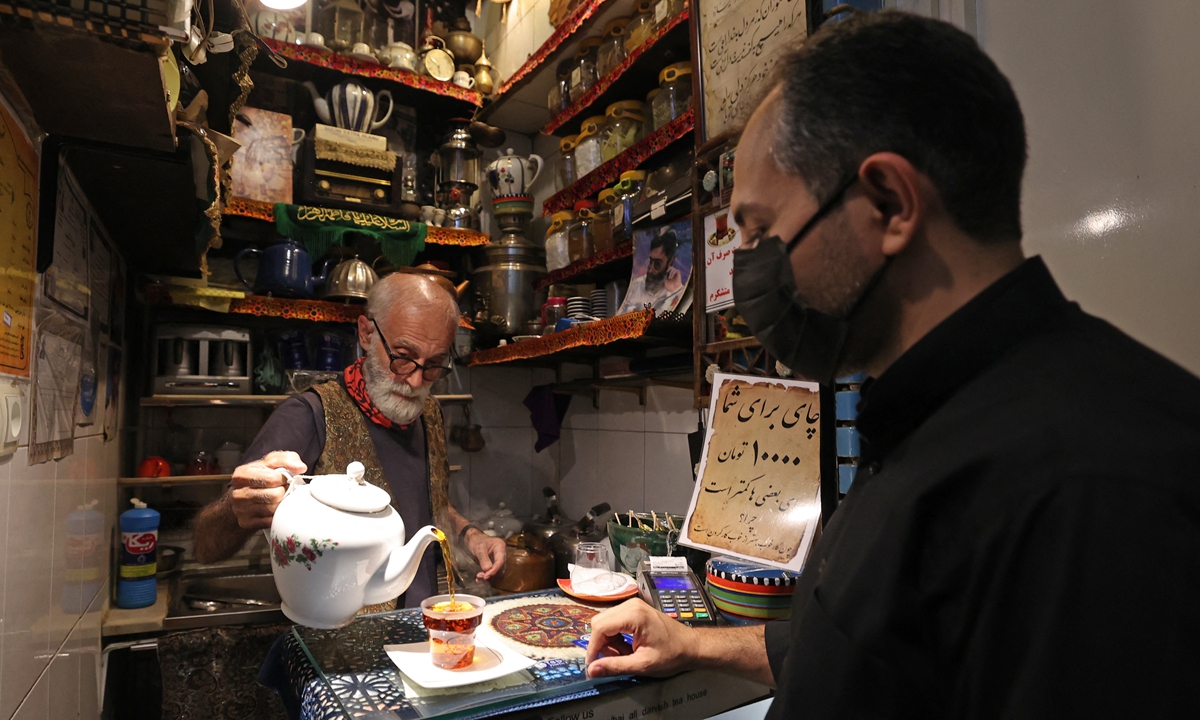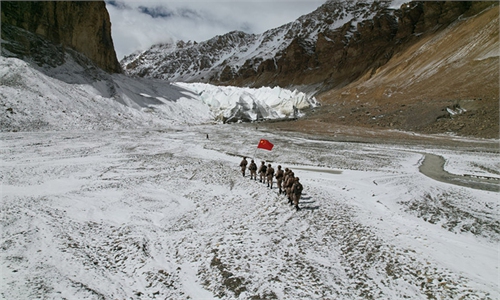ARTS / CULTURE & LEISURE
Treats and tradition in Tehran’s oldest, tiniest teahouse
A cup of kindness

Owner Kazem Mabhutian, 63, serves tea at the smallest and oldest teahouse tucked away in an alleyway of the Grand Bazaar in the Iranian capital Tehran on Monday. Photo: AFP
With his trimmed beard, red scarf and bronze-colored waistcoat, Kazem Mabhutian serves a steady stream of customers in the smallest and oldest teahouse in Tehran, but at 63 years old, he is counting on God to find him a successor.
Tucked in an alleyway of the Grand Bazaar, wedged between a clothes shop and the door of a mosque, his 1.5-square-meter chaikhaneh (teahouse) is invisible from the main street.
And yet it is the most famous among tea connoisseurs in the Iranian capital.
In between pouring glasses of steaming brew for his customers, Mabhutian tells the century-old story of the fabled Haj Ali Darvish Tea House with pride.
His father Haj Ali Mabhutian, nicknamed the Dervish or Beheshti, or "He who deserves paradise," was born in Hamedan in western Iran, he says.
"He came to Tehran at the age of 15 to earn a living. He bought this shop from Haj Hassan who had opened it in 1918."
Arranged around him are cups and teapots, boxes of tea and a samovar water-heater. There is an antiquated radio, a paraffin lamp, statuettes of dervishes, and gold-colored sticks of nabat, a saffron-scented barley sugar.
On the wall, a tourism ministry certificate assures that the place "is part of the intangible heritage of the national culture."
Aside from the traditional Iranian black tea, Mabhutian prepares cardamon, cinnamon, mint, thyme and hibiscus brews every day from 7:30 am.
But his favorite is his signature "tea of kindness," a mixture of mint, lemon and saffron which gives it a zesty yellow color.
Business is usually steady: Experts say that Iranians consume an average of nine small glasses of tea a day, or 100,000 tons nationwide every year.
"Until 2007, my father ran this house, known as the smallest in the world," said Mabhutian.
"Then he broke his leg and never returned to work. He stayed at home until his death in 2018 at the age of 92."
Kazem then left his advertising agency job and took over the business.
"I don't regret it at all," he said.
"Advertising was a business, but this is a question of love. I chose this job with my heart, not for the money."
Given the miniature size of the teahouse, there are no tables, but customers can pull up a plastic stool outside, amid the bazaar's bustle.
Seated there was Shafagh, a 32-year-old graphic designer, with her friend Forough, 47.
"Everyone sells tea, but the important thing is to know how to make it," said Shafagh.
"It's like cooking - when someone makes tea with love, it tastes completely different."
Forough chimed in that "I also come to chat with the owner. I think his tea is nothing like the tea served in other places."
Mabhutian is getting on in years and is still single, so does he worry about what will become of his beloved shop in future?
"Not at all," he said confidently.
"God will find me a successor. A place like this one does not die."



